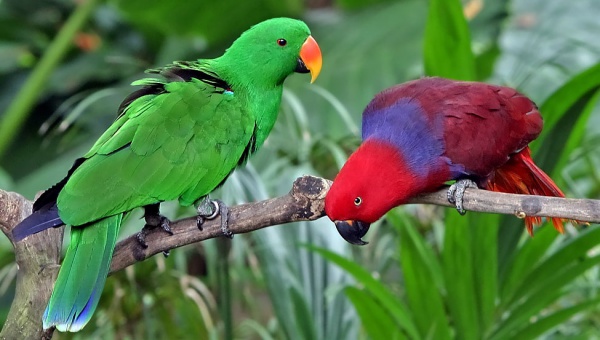Facts About Eclectus parrot
The Eclectus parrot, native to various islands in the Pacific, is renowned for its striking sexual dimorphism. Males exhibit vibrant green plumage, while females display dazzling red and purple/blue feathers. This distinction is so marked that early observers mistakenly believed they were two entirely separate species. Indeed, the Eclectus parrot is recognized as the most sexually dimorphic of all parrot species.
Intriguingly, fossil remains of another species, the oceanic Eclectus parrot, have been discovered in archaeological sites in Tonga and Vanuatu. Unfortunately, this species went extinct following human settlement on those islands.
There are nine recognized subspecies of Eclectus parrots, each exhibiting slight variations in color and size. In the wild, these parrots primarily consume fruits, nuts, and seeds. In captivity, their diet is supplemented with a variety of fruits, vegetables, and specially formulated pellets. They nest in the hollows of large rainforest trees and have a unique breeding strategy where females may mate with multiple males.
Eclectus parrots are quite popular among bird enthusiasts. They are relatively easy to breed but can be challenging to hand-feed. Known for their calm nature, they can sometimes display neophobia (fear of new things) and are prone to feather-destructive behavior. In Australia, captive Eclectus parrots might be hybrids of different subspecies. These striking birds have an average lifespan of about 30 years in captivity, although some individuals have lived up to 40.8 years.
